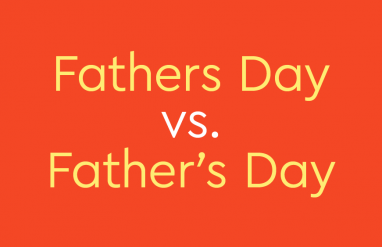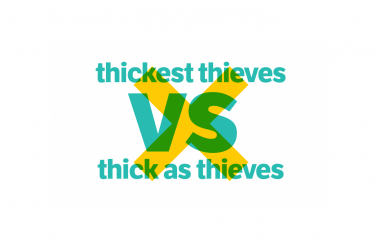You can use adjectives to say a lot of different things. Thanks to adjectives, you can tell someone that you had an amazing birthday or that you ate a delicious meal. You can use adjectives to talk about your exciting vacation, your favorite movie, or even your little dog. Adjectives come in many different shapes and sizes, but many of them have something in common: they are used to describe people, places, and things. There are many types of adjectives, but descriptive adjectives are the ones you need when you want to describe something.
What is a descriptive adjective?
A descriptive adjective is an adjective that modifies a noun or pronoun by describing it or expressing its quality.
Take a look at the following sentences:
- He stood next to the tall woman.
- The monkeys were very loud.
In these sentences, the words tall and loud are descriptive adjectives. They both describe the nouns they modify and tell us information we can use to describe the things they are referring to. We know that the woman would need a high number to refer to her height, and we know that the monkeys make noise that can be heard from far away.
Now, you might be wondering, “Don’t all adjectives describe the nouns and pronouns they modify?” While it is true that the vast majority of adjectives are descriptive adjectives, some adjectives don’t actually describe the nouns or pronouns that they modify. We refer to these adjectives as limiting adjectives.
The following sentence has an example of a limiting adjective:
- Hand me that pen.
In this sentence, the word that is an adjective that modifies the noun pen. The adjective that indicates the pen is relatively far away from the speaker. However, the word that doesn’t describe the pen’s qualities or characteristics. We don’t know what the pen looks like, how heavy it is, how large it is, etc. The adjective that is not a descriptive adjective, because it doesn’t give us any information we can use to describe the traits or qualities of the noun it modifies.
Don’t limit your grammar knowledge—learn more about limiting adjectives here!
List of descriptive adjectives
A great many of the adjectives you will find are descriptive adjectives. As long as an adjective describes or qualifies the noun or pronoun it modifies, it is considered to be a descriptive adjective. The following list gives just a few examples of descriptive adjectives:
- angry, blue, careful, dry, eager, fast, great, hot, incredible, jumpy, klutzy, little, mighty, nice, outlandish, prim, quiet, rude, special, ticklish, undercover, vicious, wide, young, zesty
Where do you include a descriptive adjective in a sentence?
Descriptive adjectives can be used either before the nouns or pronouns they modify or can be used as the subject complement of a sentence following a linking verb.
- We played with the cute kittens.
- The skyscraper was humongous.
Descriptive adjective examples in a sentence
The following sentences have examples of descriptive adjectives. You’ll notice that all of these adjectives tell you something about a the qualities or characteristics of a noun or pronoun.
Example #1
- I don’t like cold weather. (The adjective cold modifies the noun weather. Cold is a descriptive adjective that qualifies the weather by saying it has a low temperature.)
Example #2
- Her clothes are really expensive. (The adjective expensive modifies the noun clothes. Expensive is a descriptive adjective that tells us the clothes cost a lot of money.)
Example #3
- We used red, green, and orange paint. (The adjectives red, green, and orange modify the noun paint. All three of these adjectives are descriptive adjectives that say what color the paint was.)
Descriptive adjective rules & best practices
Grammatically, the most important thing to know about descriptive adjectives is that they come after limiting adjectives in adjective order and after non-descriptive words like articles and numbers. For example, we would say Danny bought some tasty oranges and not Danny bought tasty some oranges. The word some is the limiting adjective, so it precedes the descriptive adjective tasty. As another example, we would say Nicole owns a big dog and not Nicole owns big a dog. The article a precedes the descriptive adjective big.
Most descriptive adjectives can form comparative and superlative adjectives when you want to compare things to each other. For example, you can say that a mouse is small, a flea is smaller, and an amoeba is the smallest of the three. You could also say that a gold watch is expensive, a mansion is more expensive, and a space shuttle is the most expensive item out of all three.
A more complicated grammatical rule comes into effect when you use multiple descriptive adjectives to modify the same noun or pronoun. When we use multiple adjectives, we generally follow a particular adjective order. For example, we are more likely to say Hans owns a small, cheap, German car than Hans owns a German, small, cheap car or Hans owns a cheap, German, small car.
Adjective order is too complex a topic to explain here, so if you’d like to learn more about the ins and outs of the proper order of adjectives, check out our detailed guide to adjective order.
Choose the best word with Grammar Coach™
We aren’t your average spell check. The Thesaurus.com Grammar Coach™ platform makes writing papers, essays, emails, and a whole lot more a whole lot easier. Its Synonym Swap will find the best nouns, adjectives, and more to help say what you really mean, guiding you toward clearer, stronger, writing. Start writing smarter today!














